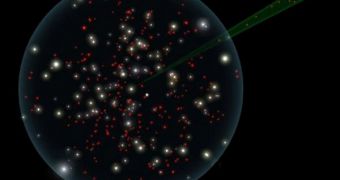Our solar system may contain a massive celestial body we know close to nothing about, astronomers say. They explain that the presence of such an object would go a long way towards explaining the large number of comets being driven from the Oort Cloud towards the Sun.
This space body may be a very large planet, a team of experts argues. Data collected thus far indicate that it may have a mass four times larger than that of Jupiter. The object may be on a very peculiar orbit around the Sun.
Its existence has been proposed for many years, but thus far nothing has been conclusively proven. In theory, its existence would make sense, and would make a lot of astronomical models about our solar system take on a lot more sense.
In order to discover such a stealth object, investigators say, astronomers will have to use infrared space telescopes, as they are the only ones that can detect cold objects located so far away.
Scientists John Matese and Daniel Whitmire, who are based at the University of Louisiana in Lafayette, the United States, are convinced that the existence of the massive planet can be teased out of data that were already collected by a NASA observatory.
Though the space agency's Wide-field Infrared Survey Explorer (WISE) spacecraft has just concluded its mission, details of the planet's location may be included in its datasets. Astronomers handling the science data returned by the telescope have yet to browse over all information.
In fact, it may take a couple of years for all the images WISE sent back are thoroughly analyzed. The two researchers say that in-depth analysis of the data contained therein will reveal the existence of the planet, which they call Tyche.
As far as the location of the planet goes, they say that it most likely lies in the Oort Cloud. This structure surrounds our entire solar system with billions of comets, meteorites and asteroids, Daily Galaxy reports.
The ring lies some 30,000 astronomical units (AU) from the Sun. An AU is roughly equal to the mean distance between Earth and the star, or some 92,955,807 miles (149,597,870 kilometers).
The team even proposes that Tyche is primarily made up of hydrogen and helium. They say that it orbits the Sun about 15,000 times farther away than Earth does. The object may even feature rings and moons, like Saturn and Jupiter do.

 14 DAY TRIAL //
14 DAY TRIAL //